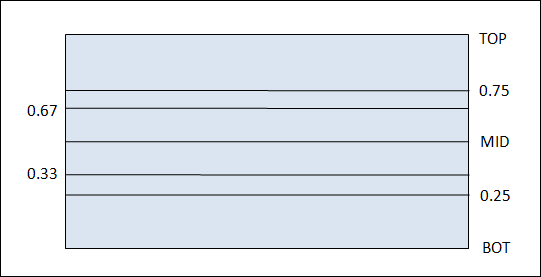CSTRAIN |

|

|

|

|
|
CSTRAIN |

|

|

|

|
I/O Options and Subcase Information Entry
CSTRAIN - Output Request
Description
The CSTRAIN command can be used in the I/O Options or Subcase Information sections to request ply strain output for elements referencing PCOMP, PCOMPP or PCOMPG properties for all subcases or individual subcases, respectively.
Format
CSTRAIN (format_list,type,extras_list,NDIV=ndiv) = option
Argument |
Options |
Description |
||
format |
<HM, H3D, OPTI, PUNCH, OP2, PLOT, blank> Default = blank |
HM: |
Results are output in HyperMesh results format (.res file). |
|
H3D: |
Results are output in Hyper3D format (.h3d file). |
|||
OPTI: |
Results are output in OptiStruct results format (.cstr file). |
|||
PUNCH: |
Results are output in Nastran punch results format (.pch file). |
|||
OP2: |
Results are output in Nastran output2 format (.op2 file) (Comment 10). |
|||
PLOT: |
Results are output in Nastran output2 format (.op2 file) when PARAM, POST is defined in the bulk data section. |
|||
blank: |
Results are output in all active formats, for which the result is available. |
|||
|
||||
type |
<ALL, PRINC> Default = ALL |
ALL, blank: |
All strain results are output. |
|
PRINC: |
Only principal strain results are output. |
|||
|
||||
extras |
<MECH, THER> No default |
MECH: |
Output Mechanical strain (in addition to total strain). This output is only available for H3D format. |
|
THER: |
Output Thermal strain (in addition to total strain). This output is only available for H3D format. |
|||
|
||||
ndiv |
<INTEGER> Default = 1 |
Number of divisions where composite strains are calculated. The maximum number of NDIV allowed in the calculation is 5. Only supported for static and normal modes analysis. (Comments 11 through 13). |
||
|
||||
option |
<YES, ALL, NO, NONE, SID, PSID> Default = YES |
YES, ALL, blank: |
Results are output for all elements. |
|
NO, NONE: |
Results are not output. |
|||
SID: |
If a set ID is given, results are output only for elements listed in that set. |
|||
PSID: |
If a property set ID is given, results for the elements referencing properties listed in the property set are output. |
|||
| 1. | When the CSTRAIN command is not present, ply strain results are not output. |
| 2. | This output is not currently available for transient analysis. |
| 3. | The STRAIN I/O option controls the output of strain results for the homogenized composite material. |
| 4. | Multiple formats are allowed on the same entry; these should be comma separated. If a format is not specified, this output control applies to all formats defined by the OUTPUT command, for which the result is available. See Results Output for information on which results are available in which formats. |
| 5. | Multiple instances of this card are allowed; if instances are conflicting, the last instance dominates. |
| 6. | The SOUT field on the PCOMP or PCOMPG bulk data entry must be set to YES to activate strain results calculation for the corresponding ply. For PCOMPP entries, the SOUT field on the corresponding PLY entries should be set to YES. |
| 7. | For plies defined on a PCOMPG bulk data entry, the results are grouped by GPLYID. |
| 8. | For optimization, the frequency of output to a given format is controlled by the I/O option OUTPUT. |
| 9. | The mechanical and thermal contributions to strain may be requested in addition to the total strain. |
| 10. | format=OUTPUT2 can also be used to request results to be output in the Nastran output2 format (.op2 file). |
| 11. | The following table shows the planes where Composite Strains are calculated for different NDIV values. BOT, MID and TOP represents the bottom, middle and top planes of an individual ply. Digital numbers represents the relative distance of a plane/division from the bottom of a ply. |
NDIV |
Planes where Composite Strains are calculated |
1 |
MID |
2 |
BOT, TOP |
3 |
BOT, MID, TOP |
4 |
BOT, 0.33, 0.67, TOP |
5 |
BOT, 0.25, MID, 0.75, TOP |

Figure 1: NDIV planes of an individual ply
| 12. | If different NDIV values are specified in CSTRESS, CSTRAIN, and CFAILURE, the largest value is used in the composite stress, strain, and failure indices calculations. |
| 13. | When CFAILURE is not present, composite strength ratios are not output. CSTRESS and CSTRAIN entries cannot be used to request failure indices. |
See Also: